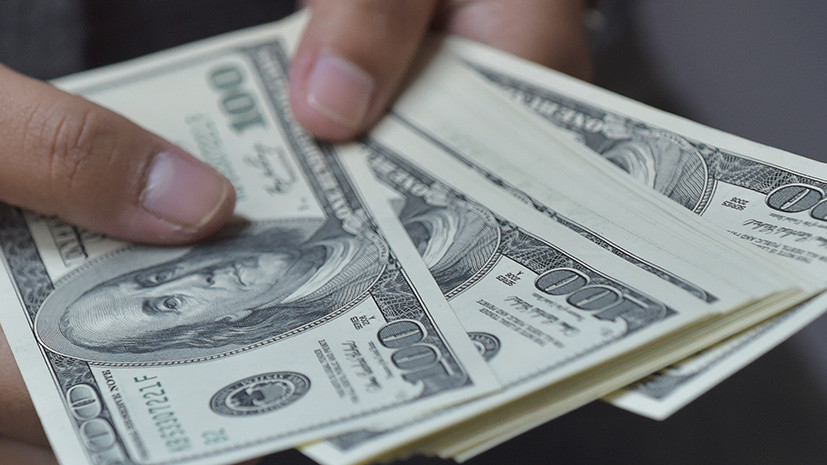On Tuesday, February 25, the Russian currency weakened during trading on the Moscow Exchange. The dollar exchange rate added 2.2% and for the first time since October 2019 reached 65.5 rubles. The euro rose by 2.3% - to 71.1 rubles. The last time a similar value could be observed in early December.
The official exchange rate of the Central Bank on February 26 was 64.92 rubles per dollar and 70.46 rubles per euro.
The negative dynamics is also demonstrated by the Russian stock market. The Moscow Stock Exchange index fell 2% to 3,044 points, and the RTS index fell 3.8% to 1,467 points. Values are the lowest in the last two months.
According to experts interviewed by RT, the depreciation of the national currency and Russian securities is associated with a general deterioration in investor sentiment in the global financial market. So, since the beginning of the week, key stock indexes have been declining in most countries of the world.
As a result of the Asian session on February 25, the indicator of the Shanghai SSE Composite Exchange fell 0.6% (to 3013 points), and the Japanese Nikkei - 3.34% (up to 22 605 points). At the same time, European stock exchanges continue to decline after falling more than 3% a day earlier. In the middle of trading on Tuesday, the French CAC 40 index fell 0.24% to 5779 points, the English FTSE 100 - 0.84%, to 7096 points, the German DAX index - 0.43%, to 12 979 points.
On the eve of the massive sale of securities affected the US stock market. On February 24, at the auction in the US, the Dow Jones industrial index sank 3.56% (to 27,960 points), the S&P 500 corporate index also fell by 3.35% (to 3225 points), and the high-tech NASDAQ lost 3.71% and fell up to 9221 points.
“The decline in stock indices since the beginning of the week is due to the onset of the second wave of coronavirus. The disease went beyond China and began to appear in densely populated and industrialized countries. This causes investors' concerns about the further impact of the virus on the global economy, reducing the growth in production and trade, ”said Mark Goikhman, TeleTrade’s chief analyst.
Recall that at the end of December 2019, authorities in Chinese Wuhan reported an outbreak of a respiratory infection of unknown origin. According to local experts, the cause of the disease was a new type of coronavirus COVID-2019. To date, the number of people infected in China has exceeded 77.6 thousand, and 2663 people have died. Such data are provided by the State Committee on Health of China.
According to the estimates of the South China Morning Post, the number of infected people in the world has reached 80.2 thousand. Outside of mainland China, most cases of the disease were recorded in South Korea (977 people), Japan (820) and Italy (229).
As the analyst of Finam Group of Companies Alexei Korenev explained to RT, the current state of affairs can provoke a drop in demand for resources in large industrial countries and turn into a slowdown in the global economy.
“At the moment, it is still unclear exactly how the epidemic will ultimately affect the global economy, but experts already predict a decrease in global GDP growth by 0.1 percentage points, and Chinese - by 0.4 and even more. Naturally, such forecasts caused a drop in stock markets, ”said Korenev.
Month of fluctuation
According to experts, additional pressure on the ruble is exerted by lower oil prices. After the news of the spread of coronavirus from the beginning of the week, the cost of raw materials of the Brent standard brand fell from $ 58 to $ 55 per barrel. This is evidenced by the ICE exchange in London.
However, the influence of oil prices on the ruble is limited by the budget rule, which stipulates that during the rise in price of hydrocarbons, the Ministry of Finance buys foreign currency and thereby puts pressure on the ruble. Moreover, in the event of a collapse in the energy market, the ministry ceases operations and pressure on the ruble weakens. As a result of such actions, the dependence of the national currency on oil prices is reduced.
Recently, the effect of the budget rule has weakened the relationship between the ruble and oil, so currency market players have become less likely to react to changes in commodity prices.
“If you look at oil prices, which have lost more than 4% since the beginning of the week, and the stock markets, which have sunk by 3-5%, then the ruble’s position still looks relatively good,” Korenev noted.
According to analysts, in the near future the situation with coronavirus will continue to be a key factor for the financial markets of Russia and the world. Meanwhile, experts do not expect a significant reduction in the price of the ruble.
“A possible weakening of the national currency will be limited to 66–67 rubles per dollar. Since the viral factor will be decisive for the dynamics of the national currency, over the next month we will continue to observe exchange rate fluctuations. I think that in the near future the dollar will remain in a fairly wide range of 63–66.5 rubles, and the euro - in the region of 70–74 rubles, ”said Anton Pokatovich, chief analyst at BCS Premier, in an interview with RT.
At the same time, Alexey Korenev allows the dollar to return to the level of 64 rubles in the event of a decrease in the spread of the virus.
“If there are no new foci of the disease, then, most likely, the dollar will return to the level of 64-64.5 rubles. In favor of such a scenario, the number of new infections in China itself has begun to decline, ”the analyst concluded.

